What is Knee Arthritis?
Arthritis is a general term covering numerous conditions where the joint surface or cartilage wears out. The joint surface is covered by a smooth articular surface that allows pain free movement in the joint. This surface can wear out for several reasons; often the definite cause is not known.
When the articular cartilage wears out the bone ends rub on one another and cause pain. This condition is referred to as Osteoarthritis or “wear and tear” arthritis as it occurs with aging and use. It is the most common type of arthritis.
Causes of Arthritis
There are numerous conditions that can cause arthritis but often the exact cause is never known. In general, but not always, it affects people as they get older (osteoarthritis).
Other causes include:
- Trauma (fracture)
- Increased stress such as overuse and overweight
- Infection of the bone
- Connective tissue disorders
- Inactive lifestyle and obesity (overweight); Your weight is the single most important link between diet and arthritis as being overweight puts an additional burden on your hips, knees, ankles and feet.
- Inflammation (Rheumatoid arthritis)
Symptoms of Arthritis
Knee arthritis causes pain and decreased mobility of the knee joint. In the arthritic knee, there is an absent joint space that shows on X-ray. In the normal knee, there is a normal joint space.
The cartilage lining is thinner than normal or completely absent. The degree of cartilage damage and inflammation varies with the type and stage of arthritis. The capsule of the arthritic knee is swollen. The joint space is narrowed and irregular in outline; this can be seen in an X-ray image. Bone spurs or excessive bone can also build up around the edges of the joint. The combinations of these factors make the arthritic knee stiff and limit activities due to pain or fatigue.
Nonsurgical Knee Treatments

Pharmacological
The knee is a complex joint which consists of bone, cartilage, ligaments and tendons that make joint movements easy and at the same time more susceptible to various kinds of injuries. Knee problems may arise if any of these structures get injured by overuse or suddenly during sports activities.

Physiotherapy
Physiotherapy or physiotherapy is an exercise program that helps you to improve movement, relieve pain, encourage blood flow for faster healing, and restore your physical function and fitness level. The main aim of physiotherapy is to make your daily activities such as walking, getting in and out of bed, or climbing stairs easier.
Surgical Treatments

Knee Replacement
The knee is made up of the femur (thighbone), the tibia (shinbone), and patella (kneecap). The meniscus, the soft cartilage between the femur and tibia, serves as a cushion and helps absorb shock during motion. Arthritis (inflammation of the joints), injury, or other diseases of the joint can damage this protective layer of cartilage, causing extreme pain and difficulty in performing daily activities.

Unicompartmental Knee Replacement
Arthritis is inflammation of a joint causing pain, swelling (inflammation), and stiffness.
Osteoarthritis is the most common form of knee arthritis in which the joint cartilage gradually wears away. It most often affects older people.

Patellofemoral Knee Replacement
Patellofemoral Knee Replacement surgery may be recommended by your surgeon if you have osteoarthritis contained to the patellofemoral compartment and you have not obtained adequate relief with conservative treatment options.

What's New in Knee Replacement?
For a patient considering knee replacement surgery, there are new developments under study which can help enhance their quality of life. These include:
- Use of cementless parts that allow new bone to grow into a porous prosthesis and hold the parts in place, creating a biologic fixation

Partial Knee Replacement
Arthritis is inflammation of a joint causing pain, swelling (inflammation), and stiffness.
Osteoarthritis is the most common form of knee arthritis in which the joint cartilage gradually wears away. It most often affects older people.

Revision Knee Replacement
Revision knee replacement surgery involves replacing part or all your previous knee prosthesis with a new prosthesis. Although total knee replacement surgery is successful, sometimes the procedure can fail due to various reasons and require a second revision surgery.

Robotic Assisted Partial Knee Replacement
Robotic assisted partial knee surgery is an innovative alternative to the conventional surgical procedure in patients suffering from degenerative knee diseases such as osteoarthritis. It is performed using robotic-arm technology that allows the surgeon to precisely perform the surgery through a smaller incision as compared to traditional surgery.

Makoplasty
Over the years, joint replacement techniques and instrumentation have undergone countless improvements. Mako Technology is designed to help surgeons provide patients with a personalized surgical experience based on their specific diagnosis and anatomy.

Osteoarthritis Management
Osteoarthritis, also called degenerative joint disease is the most common form of arthritis. It occurs most often in older people. This disease affects the tissue covering the ends of bones in a joint (cartilage). In a person with osteoarthritis, the cartilage becomes damaged and worn out causing pain, swelling, stiffness and restricted movement in the affected joint.

